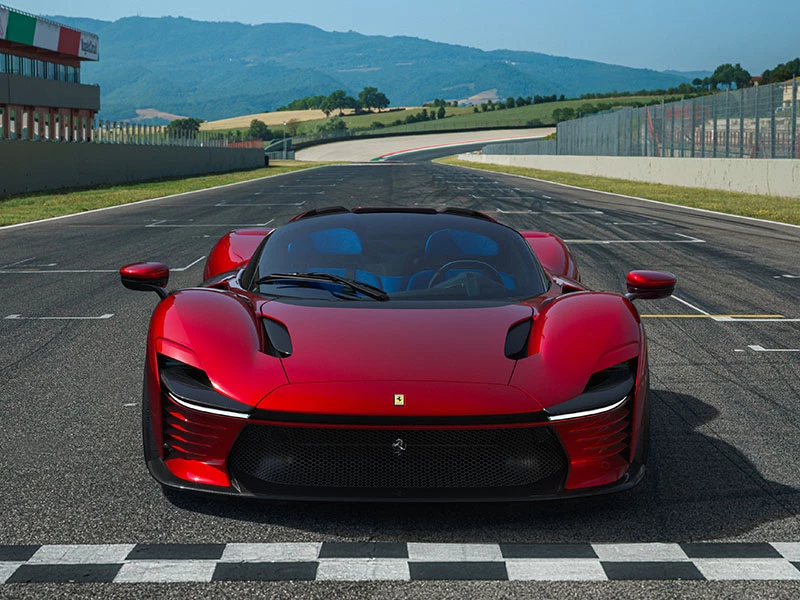
Three Ferraris on the podium at the 1967 Daytona 24 Hours, the first race of the Sports Prototype World Championship: the 330 P3/4, 330 P4 and 412P, which crossed the finish line side by side, embodied the spirit of the sports prototypes of the 1960s, the golden age of racing cars with closed wheel arches. The Ferrari Daytona SP3, the second car in the Icona limited-edition segment, pays homage to the Ferrari sports prototypes with V12 mid-engined engines that made the brand a motorsport legend.
The F140HC, Ferrari's most powerful internal combustion engine to date, is a V12 mid-engine with 840 hp that takes over the architecture and the improved displacement of the F140HB in the 812 Competizione. These developments increase the performance of a drivetrain that, thanks to its excellent sound and the 7-speed gearbox, the usability of which has been improved through special strategies, should become the new benchmark in its category.
The design of the Ferrari Daytona SP3 is inspired by the racing cars of the sixties, but at the same time its shapes are modern and original. Its expressiveness celebrates the volume of the sports prototypes with a contemporary redesign. The overall balance is emphasized by the monolithic appearance of the volumes, which highlights the craftsmanship of the Italian coachbuilders. One has the impression of standing in front of an object in which flowing masses combine with more sharply modulated surfaces in order to create that aesthetic balance that has always characterized the history of the Maranello company.
This series celebrates the history of Ferrari by taking the timeless design of the brand's most iconic cars in a radically modern way. The Ferrari Daytona SP3 goes back to one of the most spectacular feats in Ferrari sporting history - the legendary hat trick at the 24 Hours of Daytona on 6th February 1967. The 330 P3/4, 330 P4 and 412P, their historic rivals from Leaving Ford behind in its homeland represented the pinnacle of development of the Ferrari 330 P3. Chief engineer Mauro Forghieri had improved the model significantly in each of the three fundamental areas of a racing car: engine, chassis and aerodynamics. The 330 P3 / 4 perfectly embodied the spirit of the sports prototypes of the 1960s, a decade that is now considered the golden era of racing cars with closed wheel arches and is a permanent reference point for generations of engineers and designers.